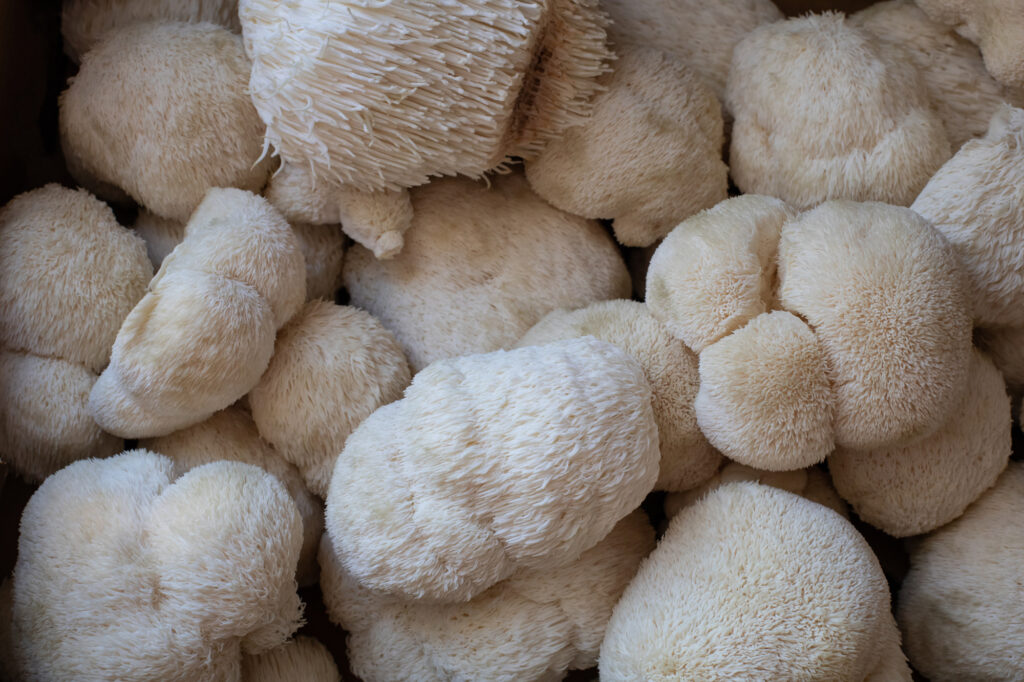Lion’s mane (Hericium erinaceus) has been prized for centuries in traditional Chinese medicine for its brain- and health-boosting properties. Now researchers from The University of Queensland have taken a big step in better understanding it, thanks to the discovery of bioactive compounds that increase nerve growth and improve memory.
These findings provide a potentially exciting new avenue for treating and preventing neurodegenerative conditions, including age-related cognitive decline and Alzheimer’s disease, say the researchers, who published their findings in the Journal of Neurochemistry.
“Laboratory tests measured the neurotrophic effects of compounds isolated from Hericium erinaceus on cultured brain cells, and surprisingly we found that the active compounds promote neuron projections, extending and connecting to other neurons,” wrote the study authors. “Using super-resolution microscopy, we found the mushroom extract and its active components largely increase the size of growth cones, which are particularly important for brain cells to sense their environment and establish new connections with other neurons in the brain.”
Lion’s mane contains many other health-enhancing compounds, including antioxidants and beta-glucans. Several other studies show that the mushroom has potent anti-inflammatory properties and helps reduce and/or protect against a range of ailments, including:
- Anxiety
- Depression
- Inflammation and oxidative stress
- Immune function
- Diabetes
- Ulcers
- Cardiovascular disease risk
- Dementia
- Cancer
- Recovery from nervous system injuries
Conclusion
Here we demonstrate that crude and purified extracts of the nootropic mushroom H. erinaceus have BDNF-like neurotrophic activity both in cultured hippocampal neurons and in paradigm models of learning in vivo, leading to marked neurite outgrowth and improved memory. H. erinaceum mushroom characteristically contains aromatic and diterpene skeletons as active components, providing a large source of structurally related terpenoids, such as erinacines, hericenones, hericerins, hericenes, hericenols, and erinacerins, that can have bioactivity. In fact, H. erinaceus contains 20 out of all 24 known diterpenoids (Friedman, 2015). We purified four aromatic compounds from the CH2Cl2 fraction (C1 to C4) with prenyl side chains: NDPIH, hericene A, corallocin A, and 4-[3′,7′-d imethyl-2′,6′-octadienyl]-2-formyl-3-hydroxy-5-methyoxybenzyla lcohol and found that they have the ability to elicit strong survival and neurotrophic responses on neuronal cultures in the absence of (and thereby replacing) serum supplementation.






